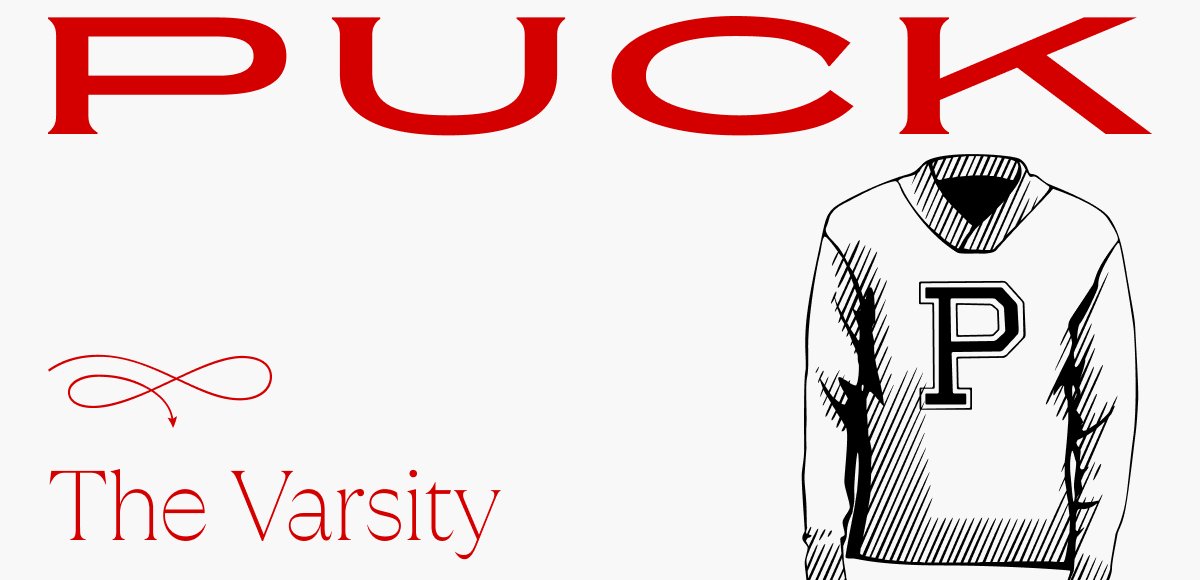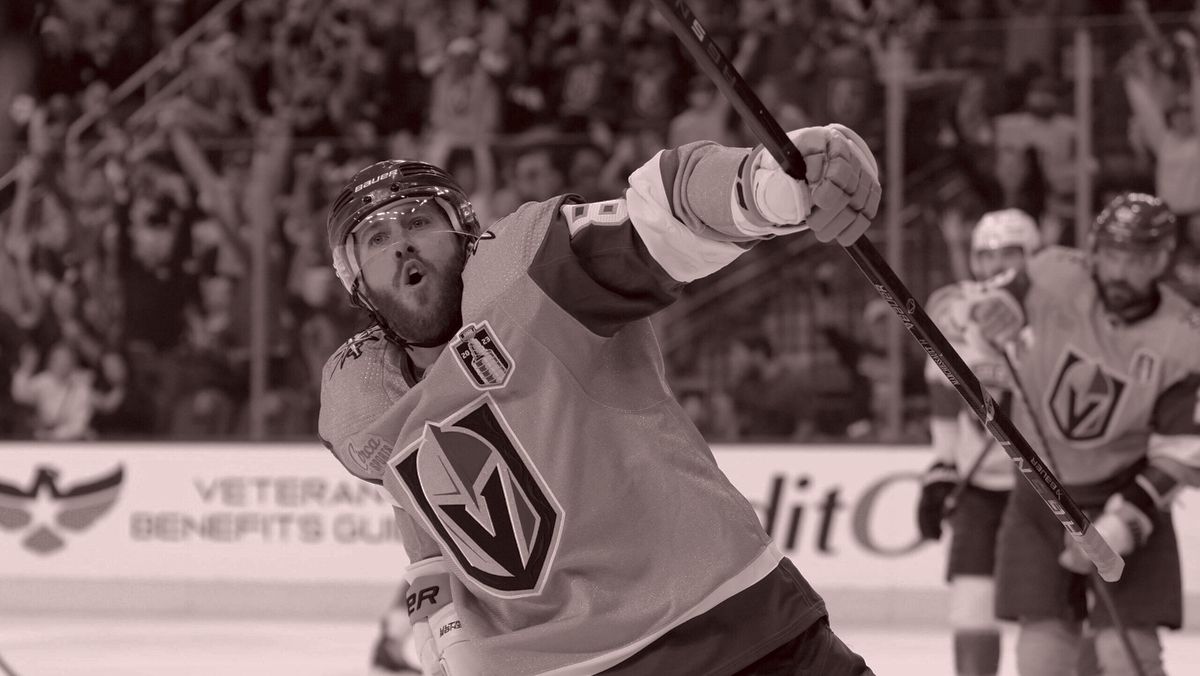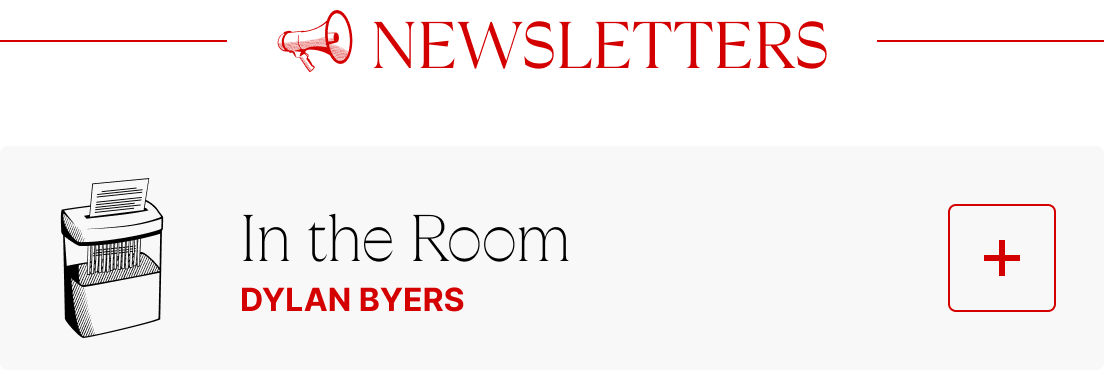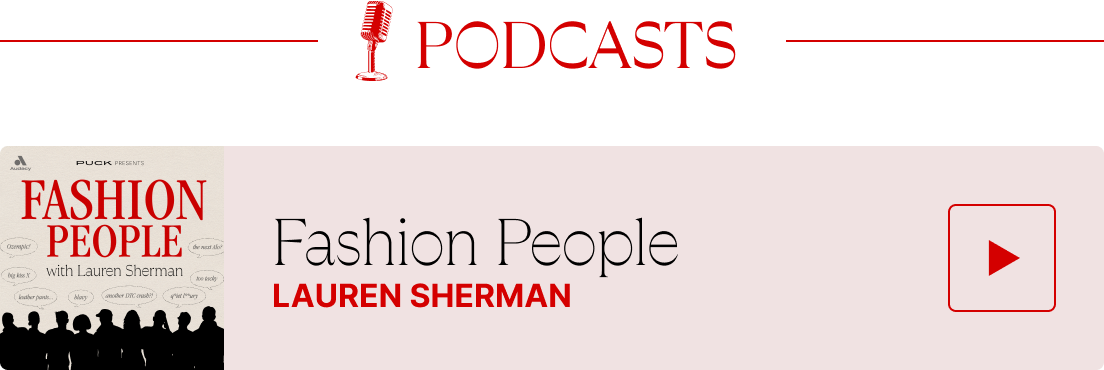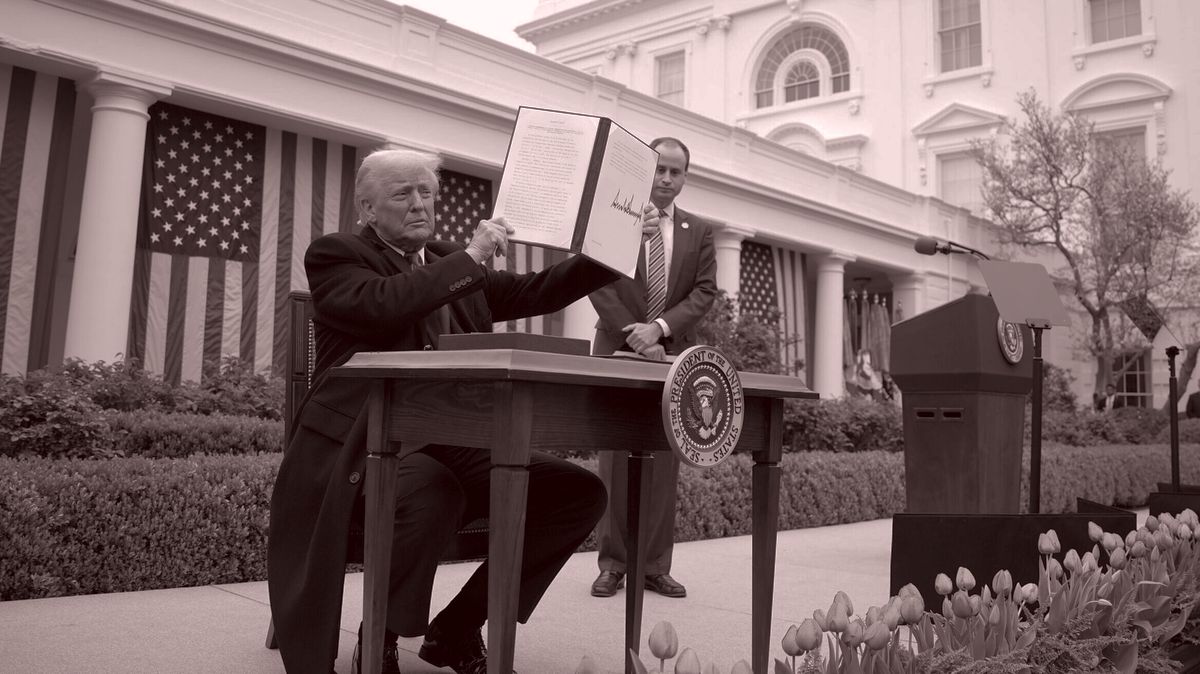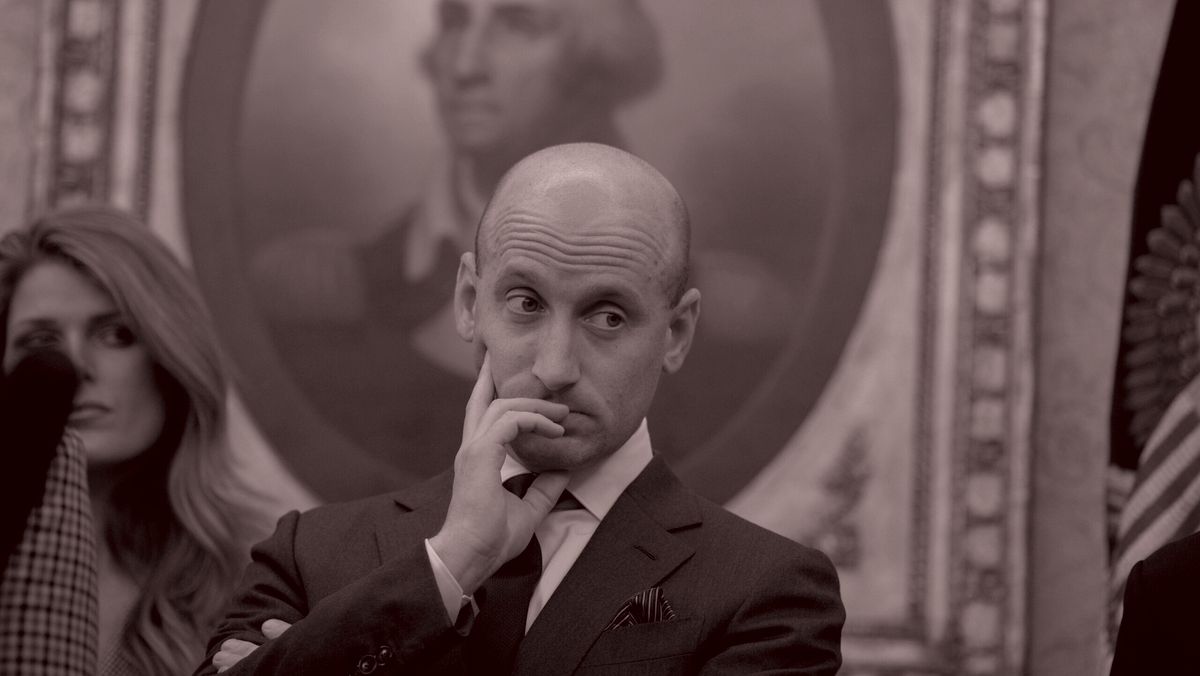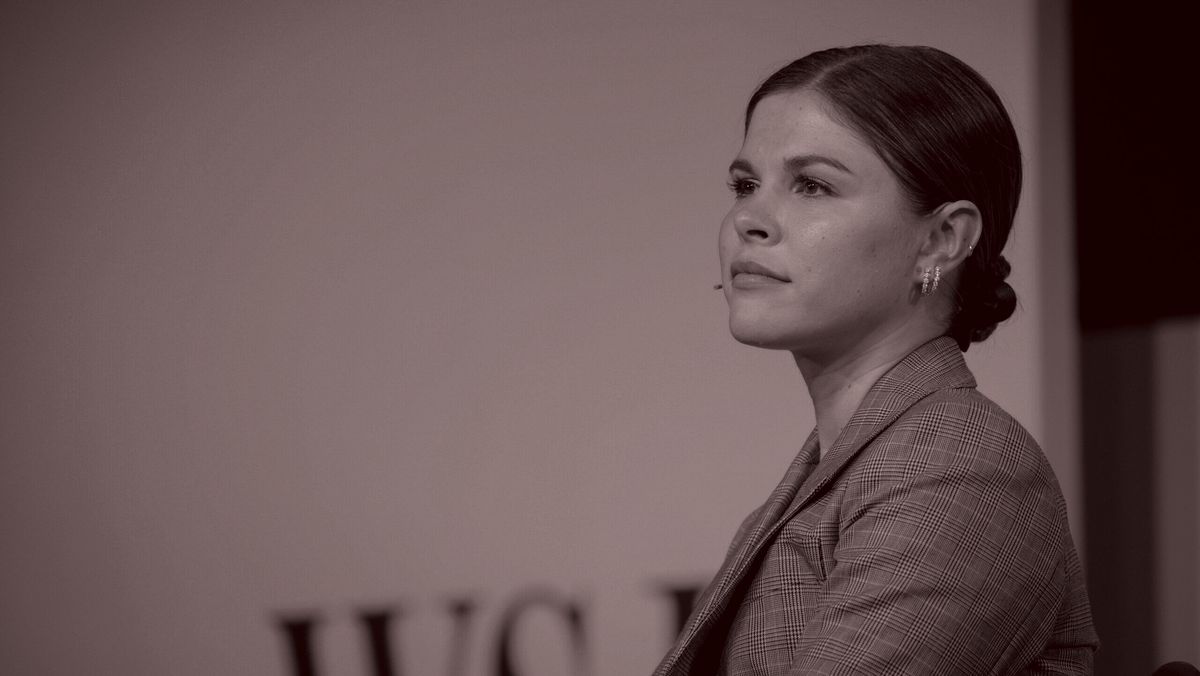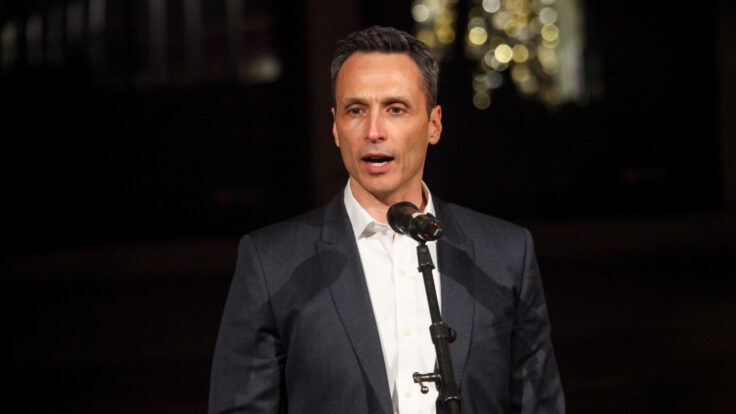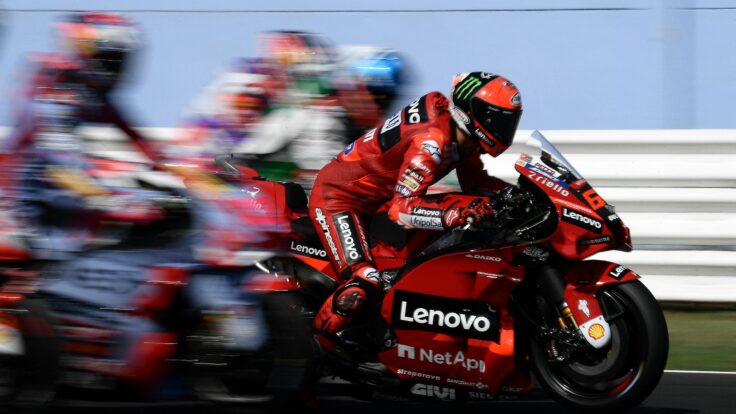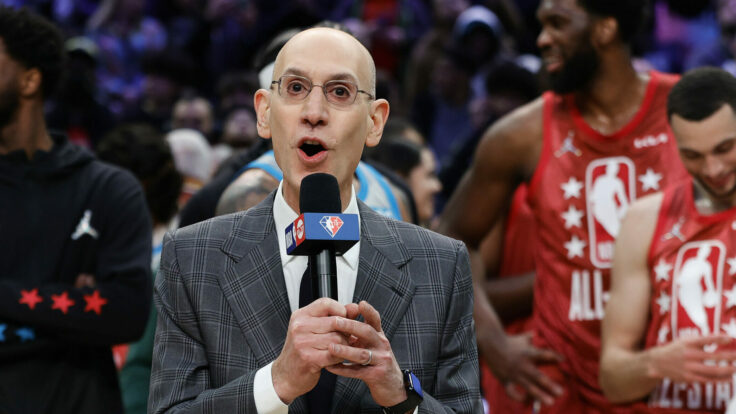Welcome back to The Varsity, now a thrice-weekly private email on the saints
who run the sports business. I’m in New York today to appear on a panel organized by the Center for Communication about the evolution of the media business. Thanks to Marchand for handling my hair, makeup, and wardrobe without too much complaint.
Next Tuesday, I’ll be in San Francisco to interview San
Francisco Giants C.E.O. Larry Baer and Fox Sports S.V.P. of strategy and analytics Ben Valenta for an event that Puck is hosting with Tishman Speyer. If you’re interested in attending and you’re a Puck subscriber, email Eric Van Gelder to RSVP via Eric@puck.news.
🚨 Pod alert: Jerry Silbowitz, the co-head of UTA Sports
Media, joins The Varsity this weekend to discuss micro-evolutions in the markets for on-air talent and rights. Also, thanks to Puck superfriend and Jersey calendar pinup Peter Schrager, who chose The Varsity as the venue to tell the story of why he left NFL Network and Fox for ESPN.
|
Player of
the Week: Pimento Cheese Sandwiches
|
Of all the great traditions at The Masters, and there are a lot of them, the $1.50 pimento
cheese sandwiches are at the top of the list. The Masters is perhaps the most unique event in sports on account of its own vocabulary (spectators are patrons, not fans; it’s the second cut, not the rough), one-year deals with CBS and ESPN, and, of course, those $1.50 sandwiches at the historic club with an enigmatic but nevertheless hefty dues structure. Everything about Augusta National feels like a throwback, from the way the tournament is presented
on television to the fact that all the finance bro patrons are forced to holster their cellphones. And the beers are still miraculously $6, too.
|
Down to the
J.V.: Scott O’Neil
|
Last week, before the LIV Golf event in Doral went head-to-head with a PGA Tour event in San
Antonio, the gregarious LIV C.E.O. Scott O’Neil invited reporters’ scrutiny by saying, “Judge me this week, for sure.” Well, the results are in, and while some industry types thought that LIV’s loaded field at Doral, broadcast live on Fox, would compete for viewership with the PGA Tour’s less glamorous event, NBC ended up with nearly four times the number of viewers (1.75 million) as LIV’s event on Fox (484,000), as I noted on Tuesday.
|
|
|
A MESSAGE FROM OUR SPONSOR
|
PERFORMANCE UNLEASHED
Agile, powerful, iconic. The Range Rover Sport is a dynamic SUV with a distinct take
on sporting luxury.
EXPLORE
|
|
|
- The Roger Goodell crystal ball: Add Peter Schrager to the list of NFL insiders who believe that NFL commish Roger Goodell will extend his deal when it comes up in two years. Schrager noted that Goodell seemed more active at last week’s owners meetings than he’s been since taking the role in 2006. “My big takeaway from this year’s league meetings is that Goodell ain’t going anywhere,” Schrager
told me on the Varsity podcast. “Roger is still very much involved, and not only on the big picture, … but in the weeds as well.”
Conventional wisdom before each of Goodell’s last three contract extensions was that he was signing his final deal. But not this time. Recall that two months ago, ESPN’s Don Van Natta Jr. came on
The Varsity and gave the same read as Schrager, saying, “What I’ve heard is that he isn’t going anywhere. He’s enjoying the job. The business is almost on autopilot. I wouldn’t be surprised if Roger returns after the conclusion of his current contract.”
- WWE chills with Netflix: When you talk media rights with anyone from the
NFL or MLB—or any league looking for a new deal, really—they often point to Netflix’s international footprint as the endzone. After all, Netflix allows a league to move into international markets via just one deal, rather than having to negotiate with broadcasters in each country.
During an appearance at the National Association of Broadcasters show earlier this week, WWE president Nick Khan and chief content officer Paul “Triple H” Levesque
described how they’re already benefiting from Netflix’s international reach just three months into the deal. Khan pointed to last month’s three-and-a-half-week WWE tour through nine European countries, which had been scheduled partly to leverage the Netflix deal. “We had never done televised events on the road to WrestleMania from international locations,” Khan said. “You just can’t pipe out American content globally, and expect it’s going to resonate. You have to be boots on the
ground.”
Sure, WWE and Netflix are in the honeymoon phase, but Khan and Triple H clearly see Netflix as the boost their company needs to reach the next level. “Everyone is on the platform,” Triple H said. “That ease of everybody being on Netflix is the reason why Netflix and chill is a saying. It’s not ABC and chill, or CBS and chill. It’s culturally significant, and easy to get to fans, if you have Netflix. No matter where you are on the globe, it’s one click
in front of you.”
It might not be totally unrelated to note that WWE’s deal with Peacock, which includes what WWE calls “Premium Live Events,” is up next March…
- The limits of social media: Last month, my feeds went berserk when WWE star John Cena turned heel. The consensus seemed to be a mixture of shock (apparently nobody saw it coming), celebration (most seemed to like the storyline) and respect for
Cena’s acting chops. Mainly because it deals in scripts, WWE tracks audience reactions closely to gauge how various character arcs are playing out. So it was interesting to listen to Khan and Triple H talk about how social media contributes to that process—or doesn’t.
“As much as we listen to our audience, we won’t listen to social media and respond,” Khan said. “We think it’s a small percentage of voices who have a big megaphone in front of them. It’s a mistake to respond to your
business based on that. You’ve got to base it off your gut and the results. … What do people like? They like dramas. People like conflict. They like to see conflict being resolved one way or another. In our business, you get to knock each other out in a 20-by-20 ring. People like that, too.”
- Sports media mojo: The last question during the podcasting panel I moderated at NAB on Tuesday was about the economy—not a surprise, really, since we were in the
throes of Trump’s worldwide tariff aftershocks. When an economic downturn is looming, companies often first cut marketing and ad spend, so there was plenty of ambient anxiety in Vegas. Still, the panelists tried their best to keep a stiff upper lip.
Carl Weinstein, the C.O.O. of Locked On Podcast Network, struck an upbeat chord. “We survived Covid, and there were no sports going on. We kept producing podcasts every day because people cared about when sports resumed,” he
said. “So is sports immune? Not entirely, but somewhat.” Courtney Hirsch, C.E.O. of Jomboy Media, said she was staying positive as well. “Advertisers want to work with media companies that can turn something on and off really quickly. They don’t want to lock up their budgets. So I’m not worried about it.”
- A Bob Iger succession idea: Ted Sarandos has repeatedly said that he has no interest in replacing Bob
Iger at Disney. He recently told Semafor’s Ben Smith that Disney hasn’t even contacted him to gauge his interest. But in one of his must-read columns, my Puck partner Matt Belloni outlined why Disney should call Sarandos anyway, and why Netflix’s co-C.E.O. should pick up. Here’s Matt:
“Disney, since its 1995
acquisition of Capital Cities/ABC, has essentially been a television company, with the majority of profit coming from the TV division, which includes ESPN. That’s one reason why Iger, who once picked the shows at ABC, was handed the gold-plated mouse ears in the first place—a TV C.E.O. for the TV era. All the more reason to anoint a streaming C.E.O. for the streaming era. … Streaming kinda equals Sarandos.”
Matt goes on to note that Sarandos relishes the showmanship required of him in his
current job, which would play well at Disney. Plus, Sarandos has analyzed Disney’s businesses dating back to the mid-2010s, when he used Marvel movies and TV shows to grow Netflix. Matt concludes: “So what’s the issue, [James Gorman, who is managing the succession process]? Make the call. Make the pitch. Sarandos might not be persuadable. But maybe he’s just playing hard to get.”
|
|
|
The bankruptcy of Diamond Sports was supposed to touch off a fire sale
for local sports rights. Two years later, local broadcasters are still waiting to pounce.
|
|
|
In early 2023, as Diamond Sports Group entered bankruptcy and its regional sports business appeared
to be crumbling, a veritable flock of vultures began to fantasize about picking up the beleaguered company’s cache of local sports rights on the cheap. These opportunists ran the gamut from almighty streamers to local broadcast channels. But two years later, most of them are still waiting for their moment to pounce. During the annual National Association of Broadcasters convention in Las Vegas this week, the local broadcast channels preached patience. They’re still interested in picking
sports rights off the carcass of the R.S.N. era, but “it’s still the second inning,” Scripps Sports president Brian Lawlor said during an NAB panel session.
Broadcast companies like Scripps and Nexstar have had some success amassing national rights for their networks, such as ION and The CW. But beyond a small a handful of NBA and NHL teams, local broadcast channels haven’t been able to make significant headway. “A lot of the teams that had been with R.S.N.s for decades
are looking at the landscape and trying to figure out if over-the-air is a good platform for them,” Lawlor continued.
|
|
|
A MESSAGE FROM OUR SPONSOR
|
PERFORMANCE UNLEASHED
Agile, powerful, iconic. The Range Rover Sport is a dynamic SUV with a distinct take
on sporting luxury.
EXPLORE
|
|
|
But there are also several roadblocks that have stalled the channels’ local sports ambitions. For
starters, there is the improbable reemergence of Diamond Sports Group in the form of Main Street Sports. As loyal Varsity readers know well, the company exited bankruptcy in the fall of 2024 after forging deals with several of the biggest distributors (including DirecTV and Charter) and leagues (NBA and NHL). And Main Street rose from the ashes ready to play ball.
The new entity’s pitch was partly aimed at convincing distributors, in particular, to continue supporting the R.S.N. business
in order to prevent local broadcasters from accumulating leverage. That pitch easily resonated with distributors, who believed that local broadcast channels, newly possessed of popular local sports rights, would fill any void left by the R.S.N.s and demand exuberant, R.S.N.-level fees. After all, roughly 85 percent of broadcast viewers still watch via a cable, satellite, or virtual M.V.P.D. subscription.
On the team side, R.S.N.s don’t have the reach they once did, of course. But
R.S.N.s across the country generally still pay higher rights fees to teams than the local broadcasters. That’s one reason the Royals, Reds, Brewers, and Tigers re-upped with Main Street Sports before this baseball season instead of forging local broadcast deals. Local broadcast channels may reach a wide audience, but a single broadcaster might not cover the entire territory in some markets, which would put pressure on distributors to carry multiple local broadcast channels in the same market, at
a considerable cost. And so far, local broadcasters haven’t been competitive on the rights fee side. “Eyeballs are definitely ahead of the monetization,” confirmed Scott Shapiro, Sinclair’s executive vice president of corporate development, who spoke on the same panel as Lawlor. “It feels early, with lots of opportunity, and lots of risk.”
From a viewership and financial standpoint, two teams that sold their rights to local broadcasters, the Vegas Golden Knights and
Florida Panthers, are doing well, according to NHL commissioner Gary Bettman. “I don’t think it’s a one-size-fits-all yet,” he said. “There are going to be alternatives to R.S.N.s.” The most recent Panthers and Knights TV viewership numbers weren’t available at deadline, but not every team is faring as well on local broadcast. My sources have told me that Jazz games on KJZZ through April 6 are down 44 percent from last season, and Suns games on Gray TV are down 23 percent in
that same time frame. At the other end of the spectrum, the Blazers’ audience has doubled this season with its games on local broadcast. “One of the reasons why we got into sports was because it drives some of the largest viewing of any genre,” Lawlor said.
In some ways, the local-versus-R.S.N. conundrum mirrors the broadcast-or-streamers choice that the leagues themselves face. In an era defined by an overwhelming platform shift, and the derivative anxiety about managing cashflow and
audience size, there are tradeoffs. At the end of the day, however, the winners will be the companies with the better business models, and the broadcasters have the edge here. Scripps has rights to the WNBA and NWSL for ION. And just this week, it announced a five-year deal to carry an early-season women’s college basketball tournament from Intersport, the Elevance Health Women’s Fort Myers Tip-Off. Scripps is also partnering with Sports Illustrated on the SI Women’s Games, which debuts
in October. But when it comes to local sports, patience appears to be the name of the game.
|
On TV viewership: “The NBA on TNT is down by a double-digit percentage this year.
How much of that has to do with them simulcasting those games on Max? We’ve seen some of that with AEW on Max taking a small bite out of the viewership on Warner Bros. Discovery’s linear TV networks.” —A Varsity subscriber
On the NCAA women’s tourney’s huge audience drop: “If you think the NCAA women’s ratings are a ‘disappointment’ or a ‘disaster,’ that makes zero sense. No one expected the numbers to match—or even come close to—last year’s, when Caitlin
Clark delivered historic highs. Growth from two years ago is anything but a disappointment. The popularity of the sport only continues to grow across the board.” —An ESPNer
On the NCAA package of rights: “You’ll never convince me that the NCAA got a great TV deal for their championships.” —A skeptical Varsity reader
|
Have a great weekend,
John
|
|
|
Ace media reporter Dylan Byers brings readers into the C-suite as he chronicles the biggest stories in the industry:
the future of cable news in the streaming era, the transformation of legacy publishers, the tech giants remaking the market, and all the egos involved.
|
|
|
Puck fashion correspondent Lauren Sherman and a rotating cast of industry insiders take you deep behind the scenes of
this multitrillion-dollar biz, from creative director switcheroos to M&A drama, D.T.C. downfalls, and magazine mishaps. Fashion People is an extension of Line Sheet, Lauren’s private email for Puck, where she tracks what’s happening beyond the press releases in fashion, beauty, and media. New episodes publish every Tuesday and Friday.
|
|
|
Need help? Review our FAQ page or contact us for assistance. For brand partnerships, email ads@puck.news.
You received this email because you signed up to receive emails from Puck, or as part of your Puck account associated with . To stop receiving this newsletter and/or manage all your email preferences, click here.
|
Puck is published by Heat Media LLC. 107 Greenwich St, New York, NY 10006
|
|
|
|
